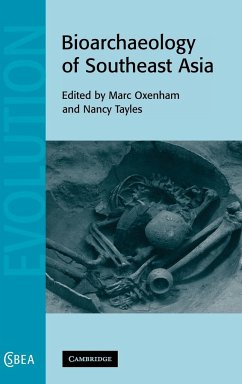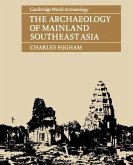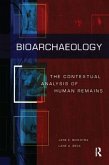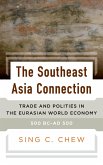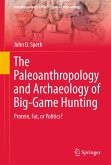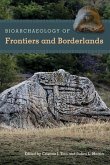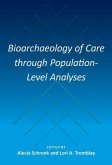First ever book to focus directly on the physical remains of past inhabitants of Southeast Asia.
Bioarchaeology of Southeast Asia is the first book to examine the biology and lives of the pre-historic people of this region. Bringing together the most active researchers in late Pleistocene/Holocene Southeast Asian human osteology, the book deals with major approaches to studying human skeletal remains. Using analysis of the physical appearance of the region's past peoples, the first section explores issues such as the first inhabitants of the region, the evidence for subsequent migratory patterns (particularly between Southeast and Northeast Asia) and counter arguments centering on in situ microevolutionary change. The second section reconstructs the health of these people, in the context of major economic and demographic changes over time, including those caused by the adoption or intensification of agriculture. Written for archaeologists, bioarchaeologists and biological anthropologists, it is a fascinating insight into the bioarchaeology of this important region.
Review quote:
'This volume provides the first comprehensive and synthetic treatment of key issues in the bioarchaeology of Southeast Asia - All contributors provide abundant and useful references to relevant current literature as well as to historical sources in paleonanthropology and bioarchaeology, a feature of the book that will be appreciated by students and researchers alike. the mix of authors contributing to the volume is well balanced. The contributions of experienced investigators with long careers devoted to the analysis and interpretation of Southeast Asian biological variation and population history is appropriately accompanied by new methods, larger and diverse study samples and fresh perspectives offered by early an mid-career researchers -' Anthropological Science
Table of contents:
Preface; Foreword; 1. Introduction: Southeast Asian bioarchaeology: past and present Nancy Tayles and Marc Oxenham; 2. The population history of Southeast Asia viewed from morphometric analyses of human skeletal and dental remains Hirofumi Matsumura; 3. A multivariate craniometric study of the prehistoric and modern inhabitants of Southeast Asia, East Asia and surrounding regions: a human kaleidoscope? Michael Pietrusewsky; 4. Interpretation of craniofacial variation and diversification of East and Southeast Asians Tsunehiko Hanihara; 5. New perspectives on the human peopling of Southeast and East Asia during the late upper Pleistocene Fabrice Demeter; 6. Human variation and evolution in Holocene Peninsular Malaysia David Bulbeck and Adam Lauer; 7. Batak dentition, Palawan Island, Philippines: Southeast Asian Negrito origins Christy G. Turner II and James F. Eder; 8. Non Nok Tha people: an assessment of dental pathological conditions Michele Toomay Douglas; 9. Human biology from the bronze age to the iron age in the Mun River Valley of Northeast Thailand Kate Domett and Nancy Tayles; 10. Paleodietary change among pre-state metal-age societies in Northeast Thailand: a study using bone stable isotopes Christopher King and Lynette Norr; 11. The oral health consequences of the adoption and intensification of agriculture in Southeast Asia Marc Oxenham, Nguyen Lan Cuong and Nguyen Kim Thuy; 12. Cranial lesions on the late Pleistocene Indonesian Homo erectus Ngandong 7 Etty Indriati; 13. 'The predators within': investigating the relationship between malaria and health in the prehistoric Pacific Islands Hallie Buckley; 14. Conclusions: synthesising Southeast Asian population history and paleohealth Marc Oxenham and Nancy Tayles.
Hinweis: Dieser Artikel kann nur an eine deutsche Lieferadresse ausgeliefert werden.
Bioarchaeology of Southeast Asia is the first book to examine the biology and lives of the pre-historic people of this region. Bringing together the most active researchers in late Pleistocene/Holocene Southeast Asian human osteology, the book deals with major approaches to studying human skeletal remains. Using analysis of the physical appearance of the region's past peoples, the first section explores issues such as the first inhabitants of the region, the evidence for subsequent migratory patterns (particularly between Southeast and Northeast Asia) and counter arguments centering on in situ microevolutionary change. The second section reconstructs the health of these people, in the context of major economic and demographic changes over time, including those caused by the adoption or intensification of agriculture. Written for archaeologists, bioarchaeologists and biological anthropologists, it is a fascinating insight into the bioarchaeology of this important region.
Review quote:
'This volume provides the first comprehensive and synthetic treatment of key issues in the bioarchaeology of Southeast Asia - All contributors provide abundant and useful references to relevant current literature as well as to historical sources in paleonanthropology and bioarchaeology, a feature of the book that will be appreciated by students and researchers alike. the mix of authors contributing to the volume is well balanced. The contributions of experienced investigators with long careers devoted to the analysis and interpretation of Southeast Asian biological variation and population history is appropriately accompanied by new methods, larger and diverse study samples and fresh perspectives offered by early an mid-career researchers -' Anthropological Science
Table of contents:
Preface; Foreword; 1. Introduction: Southeast Asian bioarchaeology: past and present Nancy Tayles and Marc Oxenham; 2. The population history of Southeast Asia viewed from morphometric analyses of human skeletal and dental remains Hirofumi Matsumura; 3. A multivariate craniometric study of the prehistoric and modern inhabitants of Southeast Asia, East Asia and surrounding regions: a human kaleidoscope? Michael Pietrusewsky; 4. Interpretation of craniofacial variation and diversification of East and Southeast Asians Tsunehiko Hanihara; 5. New perspectives on the human peopling of Southeast and East Asia during the late upper Pleistocene Fabrice Demeter; 6. Human variation and evolution in Holocene Peninsular Malaysia David Bulbeck and Adam Lauer; 7. Batak dentition, Palawan Island, Philippines: Southeast Asian Negrito origins Christy G. Turner II and James F. Eder; 8. Non Nok Tha people: an assessment of dental pathological conditions Michele Toomay Douglas; 9. Human biology from the bronze age to the iron age in the Mun River Valley of Northeast Thailand Kate Domett and Nancy Tayles; 10. Paleodietary change among pre-state metal-age societies in Northeast Thailand: a study using bone stable isotopes Christopher King and Lynette Norr; 11. The oral health consequences of the adoption and intensification of agriculture in Southeast Asia Marc Oxenham, Nguyen Lan Cuong and Nguyen Kim Thuy; 12. Cranial lesions on the late Pleistocene Indonesian Homo erectus Ngandong 7 Etty Indriati; 13. 'The predators within': investigating the relationship between malaria and health in the prehistoric Pacific Islands Hallie Buckley; 14. Conclusions: synthesising Southeast Asian population history and paleohealth Marc Oxenham and Nancy Tayles.
Hinweis: Dieser Artikel kann nur an eine deutsche Lieferadresse ausgeliefert werden.

